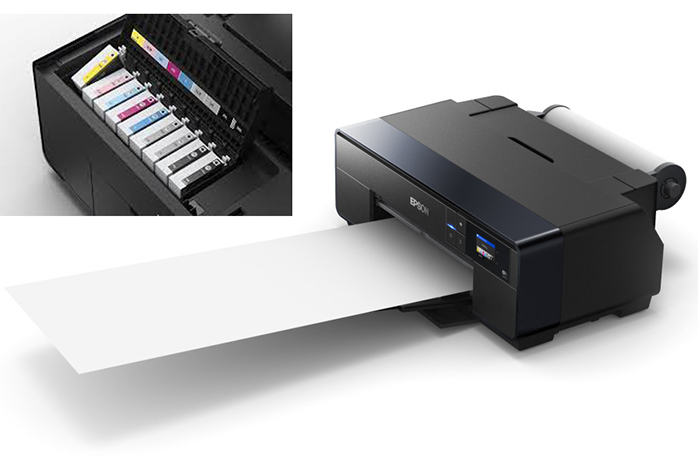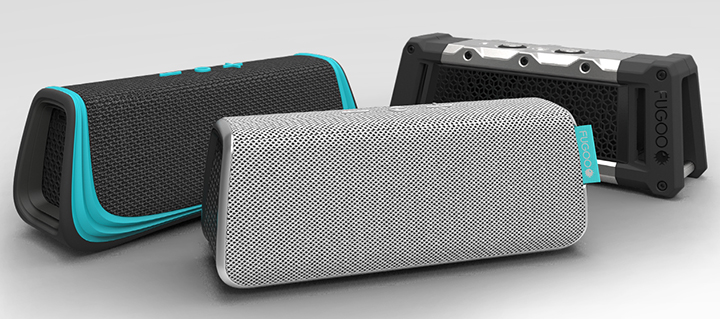*Steve Makris is a technology expert who does a monthly Tech Talk segment during Edmonton’s Sunday Morning News. You can watch his segment above.

EDMONTON – Photo prints have been around for a long time. I still horde them, from habit, despite my busy digital life.
There’s an endearing charm to holding photographs, big or small, much like reading an old-fashioned book. There’s no bright screen, just a simple paper capture of a photo moment you can touch.
Despite the thousands of pictures most folks now have on their phones and the dozen cloud storage sites, the power of photo prints still endures. Chances are you will look after your printed photos more than your digital ones.
But not all photo prints you print at home, order online or in stores, are the same.
Most are printed using ink jet printers using tiny colour ink dots placed on paper. Home printers only use black and three ink colours, while better models use more inks and print in smaller dots. Photo labs use faster ink jet printers with smaller dots and even more ink colours. In comparison, traditional “wet” photo lab printers use chemicals and with continuous tones.
Which makes the best prints? Without a doubt, it’s traditional wet printing and it’s done at cheaper prices!
- US forces stop 2nd oil tanker off Venezuela coast as Trump follows promise to seize tankers
- Flu hospitalizations rise sharply as H3N2 spreads across Canada
- Tax season is still months away. Doing 3 things now could help you later
- Paraplegic engineer becomes the first wheelchair user to blast into space
The century-old wet print technology has proven non-fading colour life. I can personally attest to that with still brightly coloured, 30-year-old album prints on my wall. Wet prints feature dot-free continuous tones for today’s digital cameras and phones, with the most lifelike picture view that comes closest to what the human eye can see.
Ink jet technology is clean, has fewer environmental concerns and takes less space in a photo lab. It is chemical free and prints faster. Wet technology uses photo chemicals in a sealed environment with no effluent in water sewers and is shipped out for silver recovery before safe disposal. Most photo labs have switched to ink jet printing for convenience.
Most photo lab inkjet album prints show tiny colour drops which interfere with print detail. Not only are wet prints better looking, but they cost less too. Costco across Canada charges 17 cents for album-sized prints, considerably cheaper than competitors.
But when it comes to poster-sized picture enlargements, most photo labs, including Costco and London Drugs (an ink jet shop), switch to better quality, professional high detail ink jet printers. The ink dots are not visible to the human eye and they use more colour inks for better looking prints.
My advice? Seek wet album size wet print photo labs for up to 8 x10 prints. Poster prints will look the same from any photo lab.
Best home printer
Speaking of home printing, I have been testing the new Epson SureColor P600 Wide Format Inkjet Printer, $969, which was recently featured at London Drugs.
It’s designed for artists and photo enthusiasts, a growing consumer section seeking better-than-cellphone pictures, and ways to show pristine photography.
Unlike most home inkjet printers, the P600 prints up to 13-inch wide prints up to 13×19 inch cut paper and 13-inch wide roll paper more than three metres long. Its quality is as good as the professional poster size inkjet printer stores use.
The P600 works with Mac and Windows computers, has WiFi, Ethernet and USB connections and can print wirelessly from mobile devices. It can also print personal covers on DVD discs.

Get breaking National news
Its strength is the ability to print on a huge selection of paper stock, including linen-free cotton fibre and acid free art paper. It also accommodates thick mediums through a manual feed and uses nine large capacity ink cartridges: yellow, light and vivid magenta and cyan, and four black inks including matte blacks.
This means it can accurately print millions of colour hues and amazing black and white pictures with rich black details, mid-tone greys and brilliant whites. It even changes automatically from regular black ink to matte depending on what kind of paper you use.

Although the P600 can handle album-size prints, its mission is to make exhibition-ready large prints quality fit for an art gallery. It does a great job printing smartphone pictures but has a voracious appetite for megapixels from better quality cameras shooting 20 megapixels of more.
It’s also ink hungry, costing $351 for a complete nine UltraChrome HD Ink cartridge replacement, or $39 per 25.9 ml cartridge. Based on my test printing on different kinds of Epson paper in colour, black and white, including canvas roll paper, it costs anywhere from 20 per cent to 100 per cent more compared to photo lab prints. That includes paper too, which coats from $0.83 for an 8.5 x11 gloss sheet to $2.00 for archival paper. One exception: the P600 can print long canvas panoramic prints on 13-inch canvas roll, at half what photo labs charge.
The P600 is accurate, consistent and so rewarding, matching the best quality cameras offer. Its tiny microscopic two-pico litre dot droplet (two trillionths of a litre) are invisible printing at a maximum resolution of 5,760 x 1,440 dots per inch.
I often mention the idea of folks splitting the cost of pricey tech items, from satellite phones to cameras and in this case printers. Fellow enthusiasts can reap the rewards of the best technology at a bargain.
Nikon DSLR for aspiring photographers
Nikon’s new D5500 digital single lens reflex (DSLR) 24.2 megapixel camera carries the same DNA of its predecessors (minus a built-in GPS) with new tricks and features. It’s $869, body only – $999.95 with kit and 18-55mm VR II Lens.
Its photo sensor provides similar picture quality to pricier Nikon DSLR cameras and competitive Canon, Sony and Fujifilm X cameras. It shoots Full HD 60-frame video with fast and slow effects. The up to 9,999 frame interval shooting produces amazing video of slow moving scenes.
For newbies, I should point out that the D5500 is a DSLR. It uses a top-mounted prism behind the optical viewfinder and a mirror behind the lens for optically viewing what your lens sees. The response and feel is like you shooting an SLR film camera, but you also enjoy seeing your shot photos onscreen.
The D5500 does have a “live” mode for composing and shooting from the main screen, but it’s insanely slow, meant for when you can’t put your eye to the viewfinder. One of the advantages of a DSLR is longer battery times as the main screen is not all the time, compared to popular mirror-less interchangeable cameras.
Its strengths are exceptional focusing and accurate exposures using features burrowed from higher end siblings. Its new fibre molded body makes it tougher, lighter and smaller than previous models for a perfect quality DSLR for travel at just 420 grams. Its full articulating 3.2-inch vari-angle screen is just sharp enough (for the price) and is touch capable, a great feature for quickly changing settings not found on the camera body.
The sensor dust reduction system is a must for any DSLR exposed to the outside whilst changing lenses.
The D5500 does not have built-in image stabilization, so you need to choose from lenses with built-in IS. Sequential photography maxes out at five frames per second, sufficiently compromised for an under $1,000 exceptional-quality camera. Focusing is better than average, using accurate cross-type sensors that quickly snap images into focus.
I found excellent image quality up to ISO 1,600 and slightly perceptible quality lose to ISO 3,200. I wouldn’t recommend the camera’s ISO 25,600 setting.
The D5500 brought back nice memories of when photography was more of an art than science…but in this case, backed up with loads of high tech.
Fugoo speaker giveaway
Tune into my tech segment on Global Edmonton’s Sunday Morning News to enter our giveaway draw.
The Fugoo Bluetooth wireless speaker, $199.99 with additional sports sleeve, is for anywhere you go and that includes inclement weather, beach or poolside. It can be three-feet underwater for up to 30 minutes. Got it dirty? Rinse off with a hose!
It features 360-degree sound with six drivers, tweeters and radiators and can run for 40 hours on one charge. The Fugoo is in the same ranks with brand name speakers like Sony and Bose with big advantages.
It’s the Go-Pro of portable speakers whose rugged inner core can be covered with three jackets – more designs coming. It also has optional shoulder strap, bike mounts, camera tripod mounts and a remote control with built-in bottle opener. The Fugoo can also be used as a speakerphone too. The optional remote can interact with Apple Siri and Android Google Now voice control, so you can call someone or check the latest sports scores.
Available at http://www.fugoo.com, Amazon and Apple and Best Buy.
For more tech news follow Steve’s personal blog.












Comments